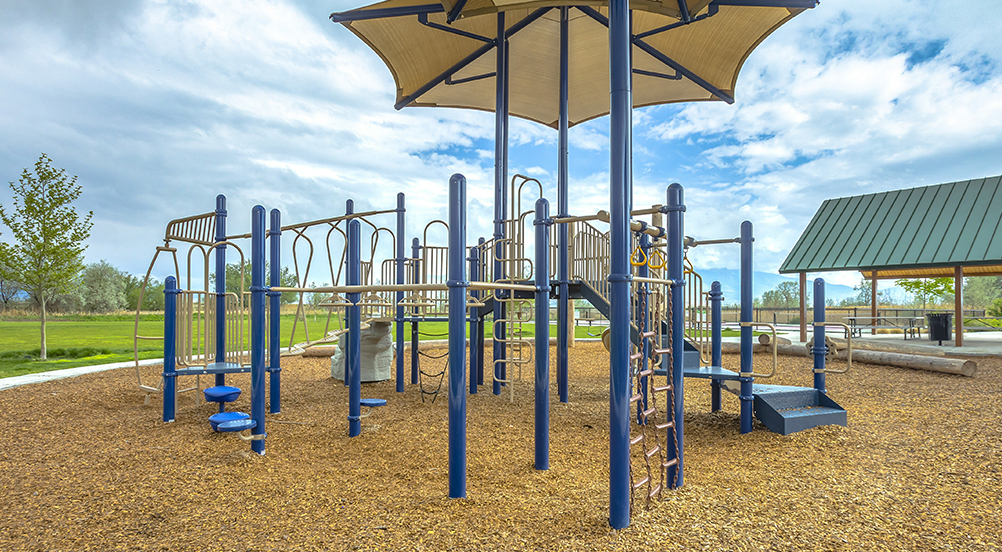Landscape Mulch & Wood Chips
Landscape mulch and wood chips have been commonly used in the past for playground surfacing because of their low cost and widespread availability. While not certified or acceptable for use on public or commercial playgrounds, one could make an argument that they are better than using nothing for residential and backyard playgrounds.
Evaluation Criteria
Learn more about the details of the evaluation criteria.
Safety
Cleanliness
Maintenance
Accessibility
Aesthetics
Installation Cost
Lifetime Cost
Landscape Mulch & Wood Chips
Safety

Safety Rating:
Chemically-Treated Mulch - The biggest problem with using landscape mulch for playground surfacing is that many mulches are treated with pesticides that deter insects, rodents and rotting. Research has shown that mulch and wood chips treated with these chemicals (such as chromated copper arsenate) can cause health concerns, especially with children.
Given this, it is important to look for non-treated mulch and wood chips as a viable option for any playground. However, even non-treated option may contain contaminants and all mulch surfaces need to be constantly maintained and replaced every 1-3 years to reduce infestation and decomposition concerns.
Note: Landscape mulch is typically made from ground up bark and twigs making it unacceptable for commercial playgrounds.
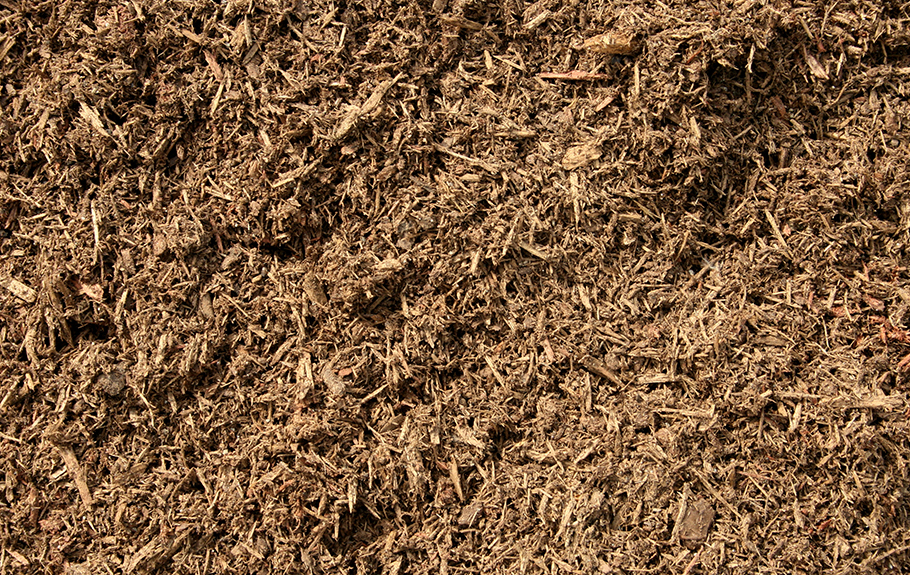
Landscape Mulch & Wood Chips
Cleanliness

Cleanliness Rating:
Since landscape mulch and wood chips are not designed to be used as a playground surface, they are often dirtier than surfaces designed specifically for playground use. This can lead to children’s hands and clothing being stained along with aggravating allergies in some cases. Other concerns include:
- Can be subject to microbial growth
- Potential to harbor insect and/or fungal growth
- Conceals harmful materials such as animal excrement or sharp objects

Landscape Mulch & Wood Chips
Care & Maintenance

Maintenance Rating:
Playgrounds using landscape mulch or wood chips require regular maintenance to ensure they are kept safe. As with all loose-fill materials, it must be regularly inspected and raked to ensure the depth is maintained to an appropriate level and any foreign objects or microbial growth is removed. Mulch should also be replaced every 1-3 years due to decomposition and scattering of material.
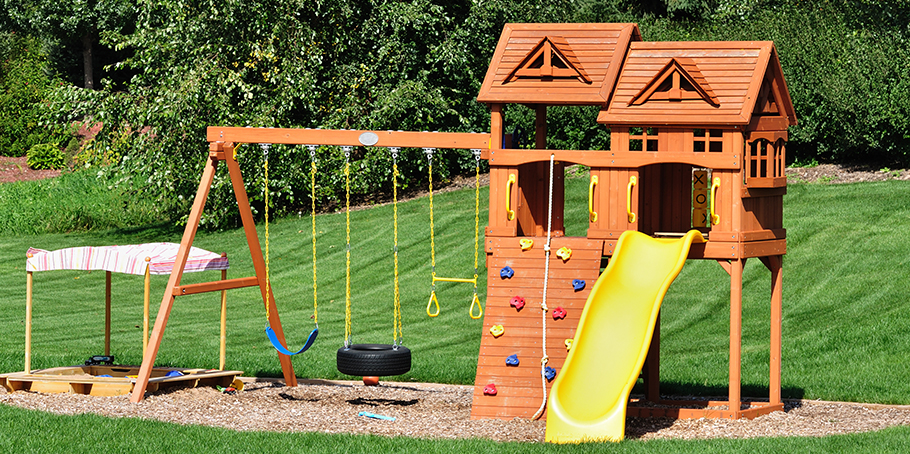
Landscape Mulch & Wood Chips
ADA Compliance & Accessibility

Accessibility Rating:
Landscape mulch and wood chips do not meet ADA accessibility requirements because they are very light and can be displaced easily, making maneuvering wheelchairs and other mobility devices difficult.
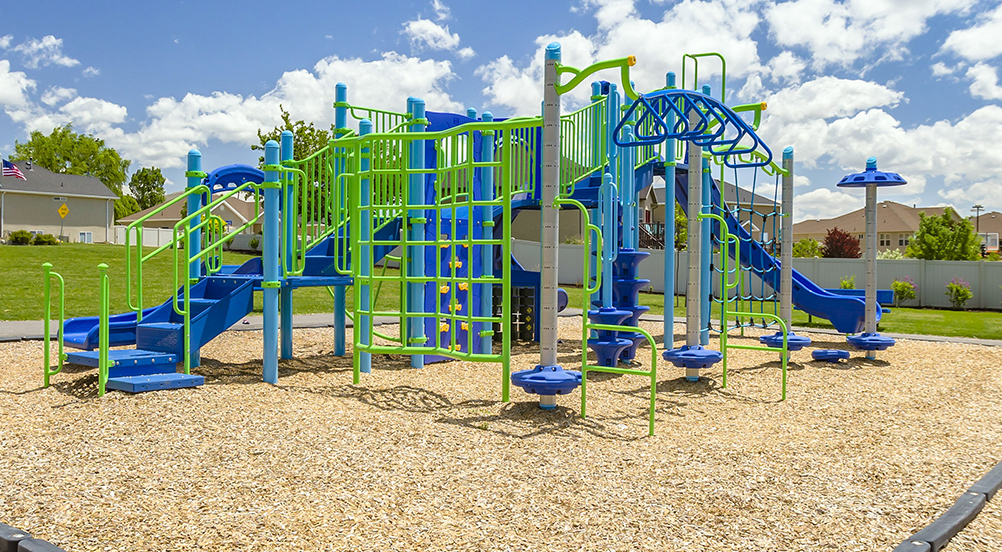
Landscape Mulch & Wood Chips
Aesthetic & Design

Aesthetic Rating:
Similar to EWF, landscape mulch and wood chips offer a more rustic and natural looking surfacing option that some prefer because they blend in with surroundings better than other materials. Design flexibility is somewhat limited however, due to the finite color selection.
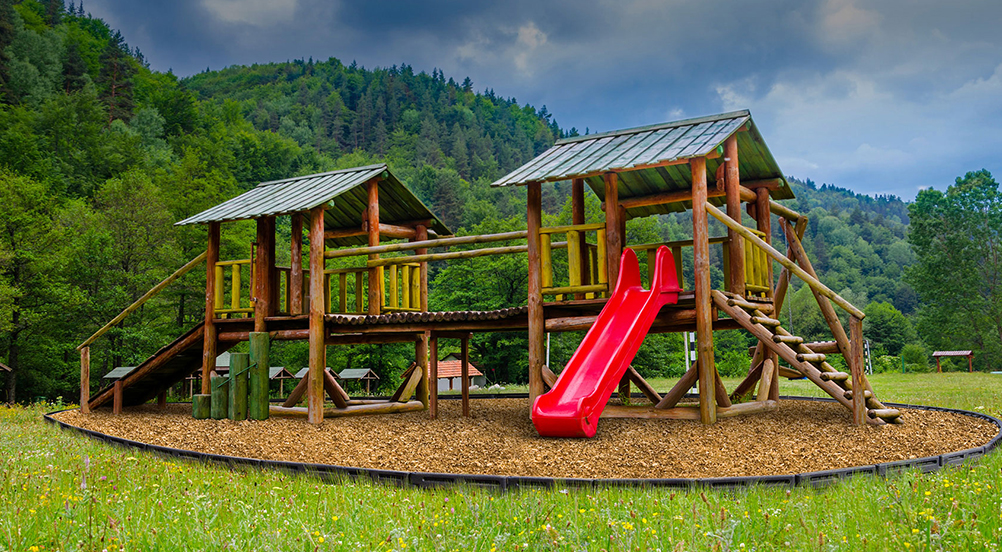
Landscape Mulch & Wood Chips
Installation Cost

Installation Cost Rating:
The installation process for wood mulch is similar to other loose-fill surfacing. Wood mulch requires the need of a subsurface, and a geotextile fabric to inhibit weed/plant growth. Wood mulch can then be spread evenly across the playground surface at the desired depth. The cost of materials for the initial installation is relatively inexpensive compared to other loose-fill surfaces, however maintenance and replacement costs over time should be kept in mind.
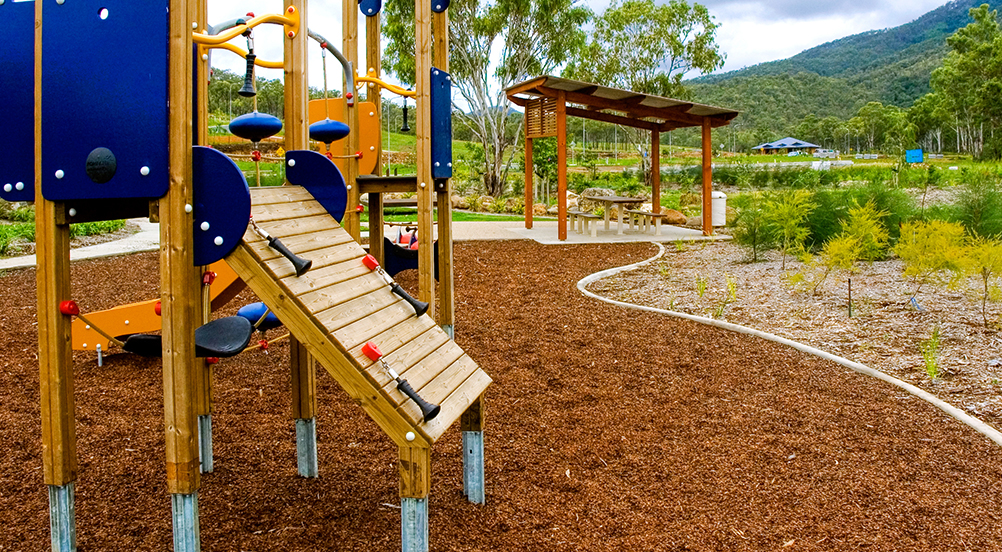
Landscape Mulch & Wood Chips
Lifetime Costs

Lifetime Costs Rating:
Since landscape mulch is not an option for public playgrounds, it can really only be considered for residential use. It can be a tempting option due to its low cost and ease of access from local hardware stores and material suppliers. However, the additional costs for a "playground mulch" are typically worth the added benefits.
